
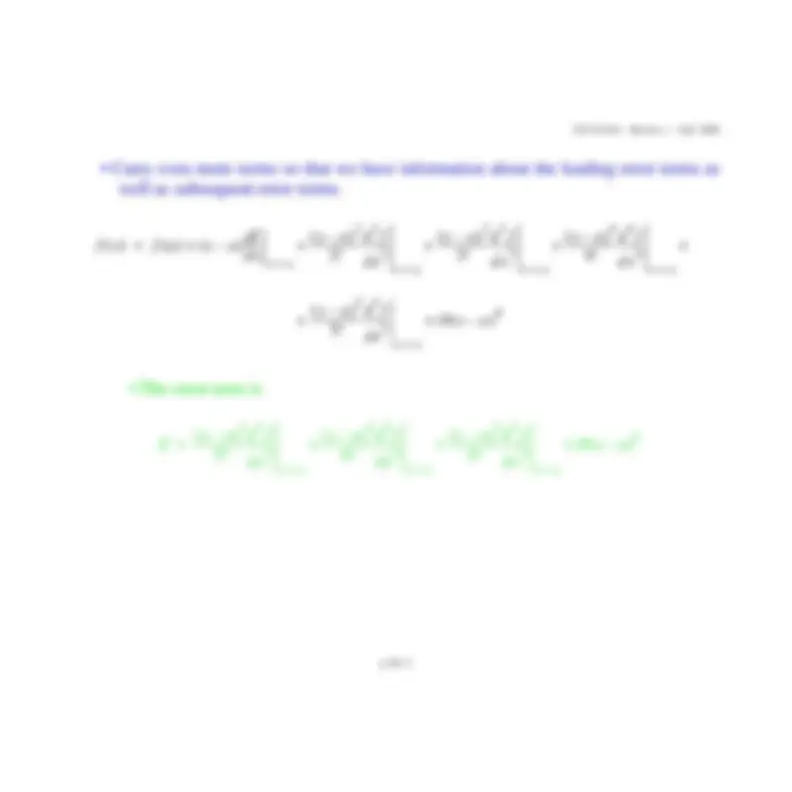
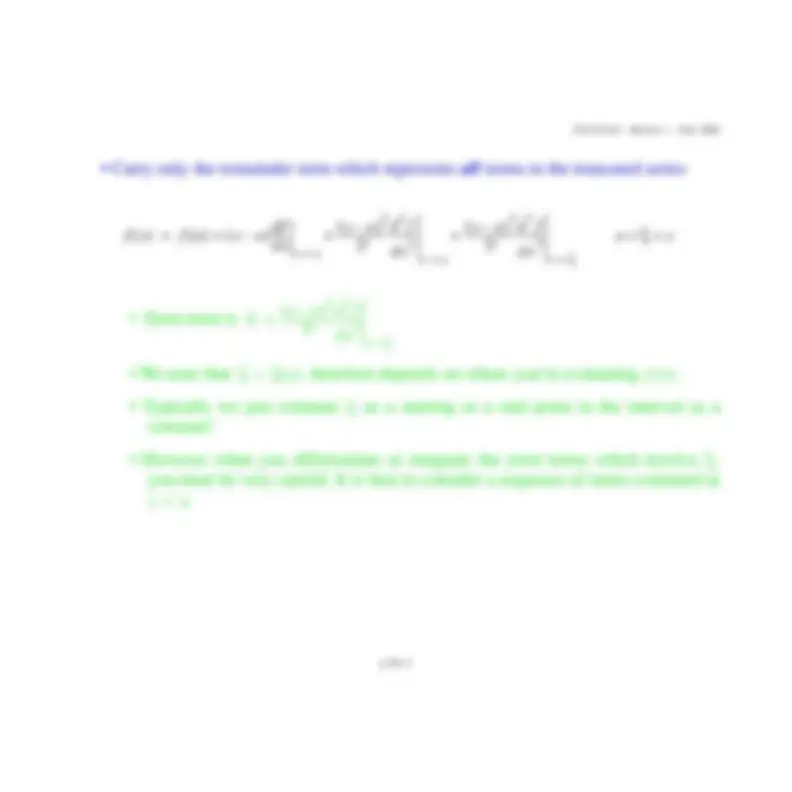
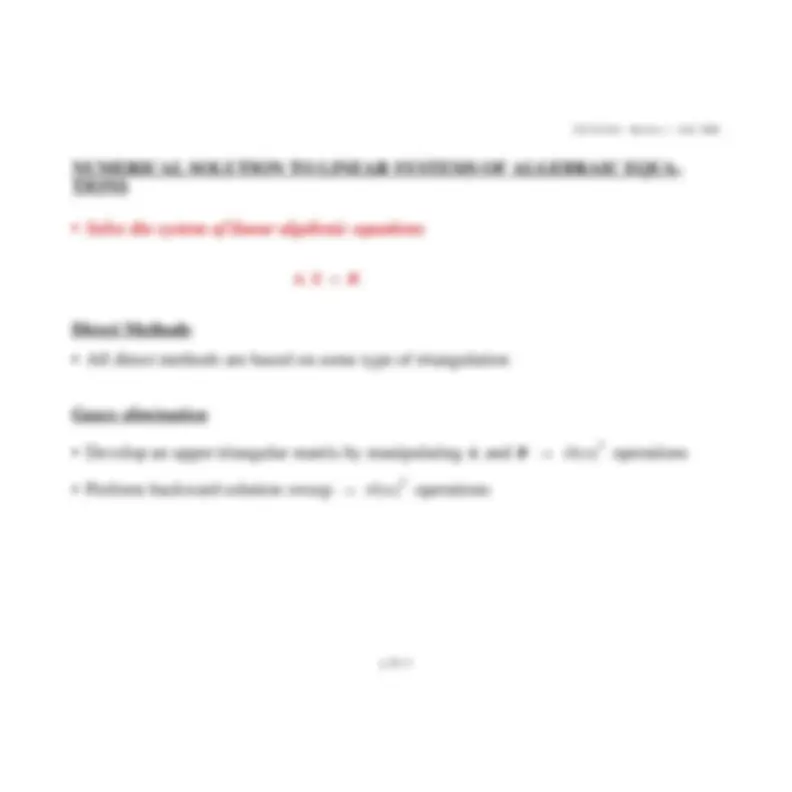
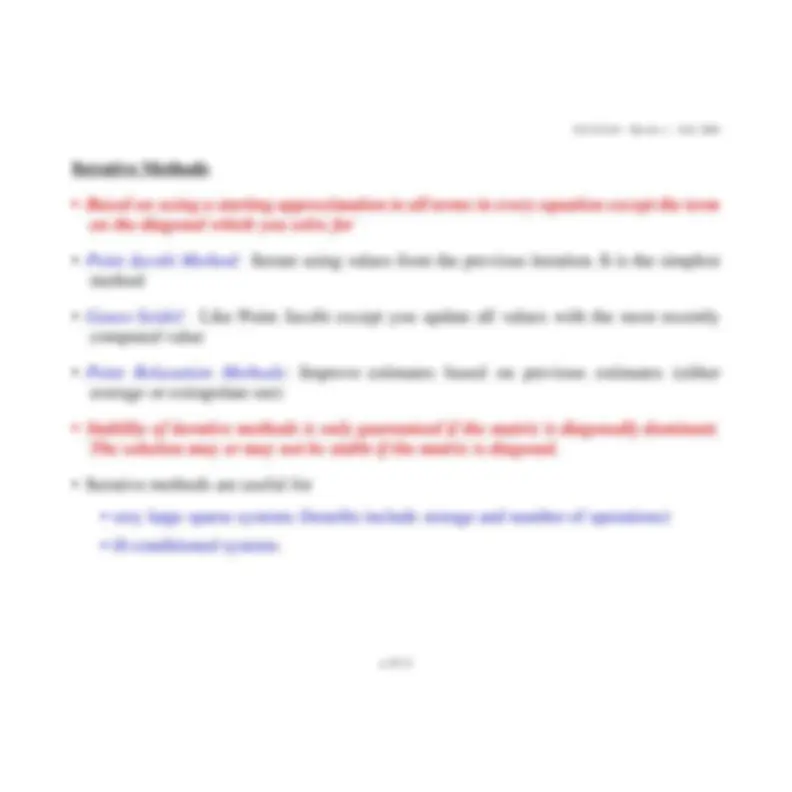
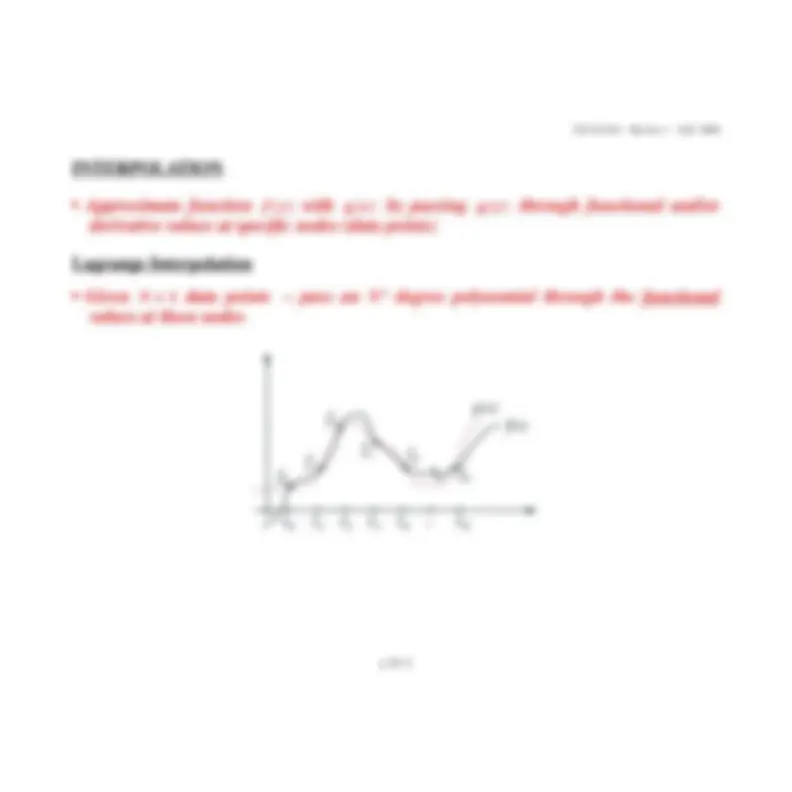
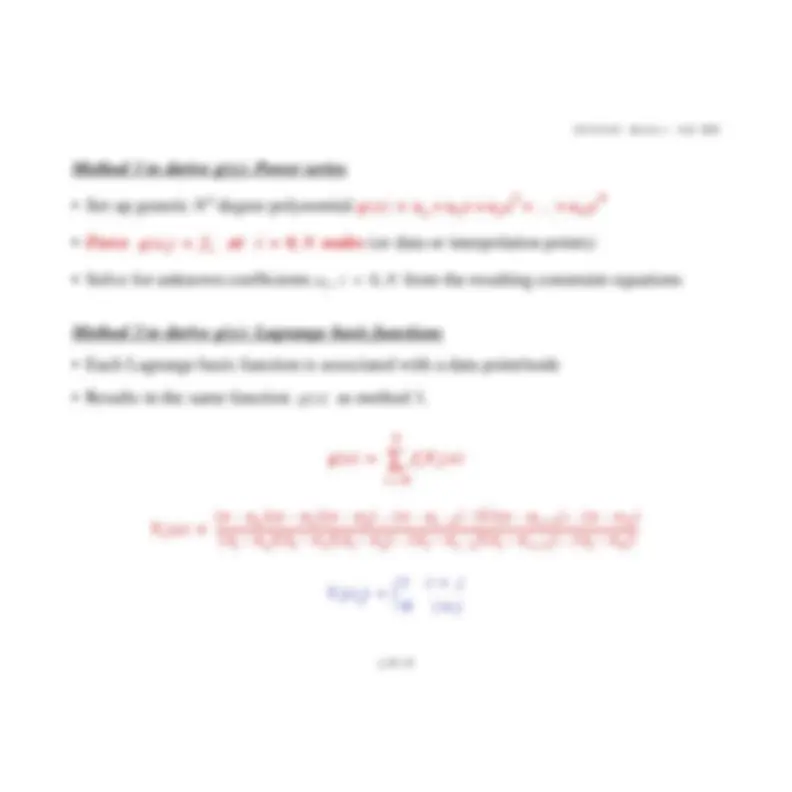
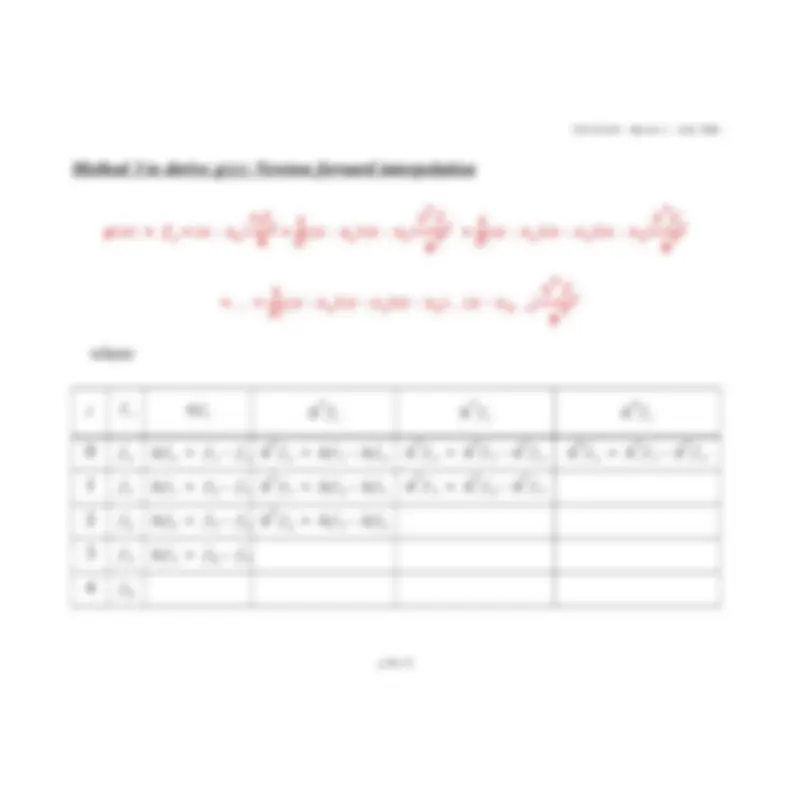
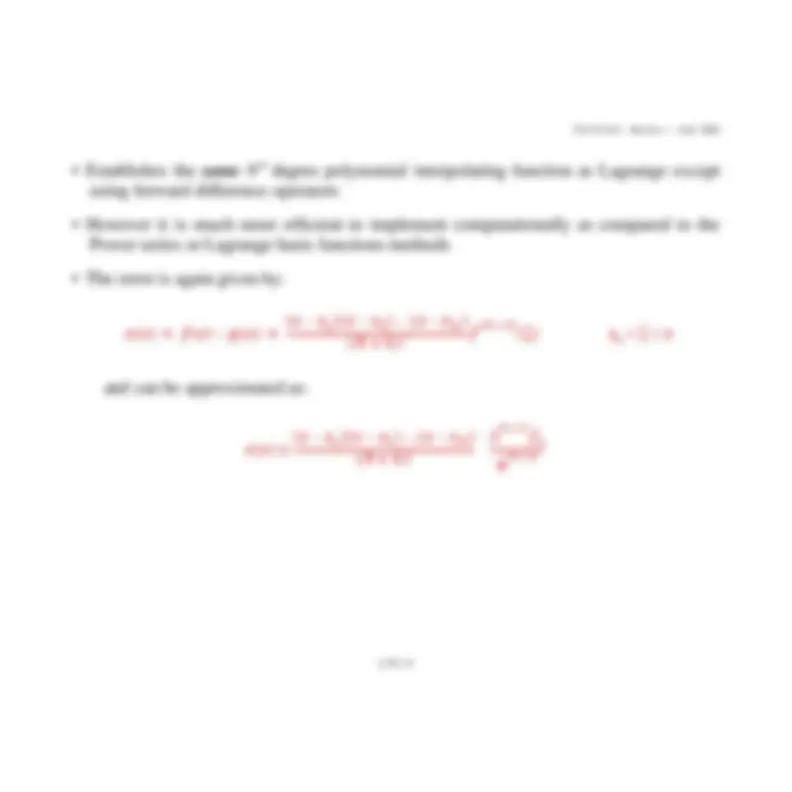
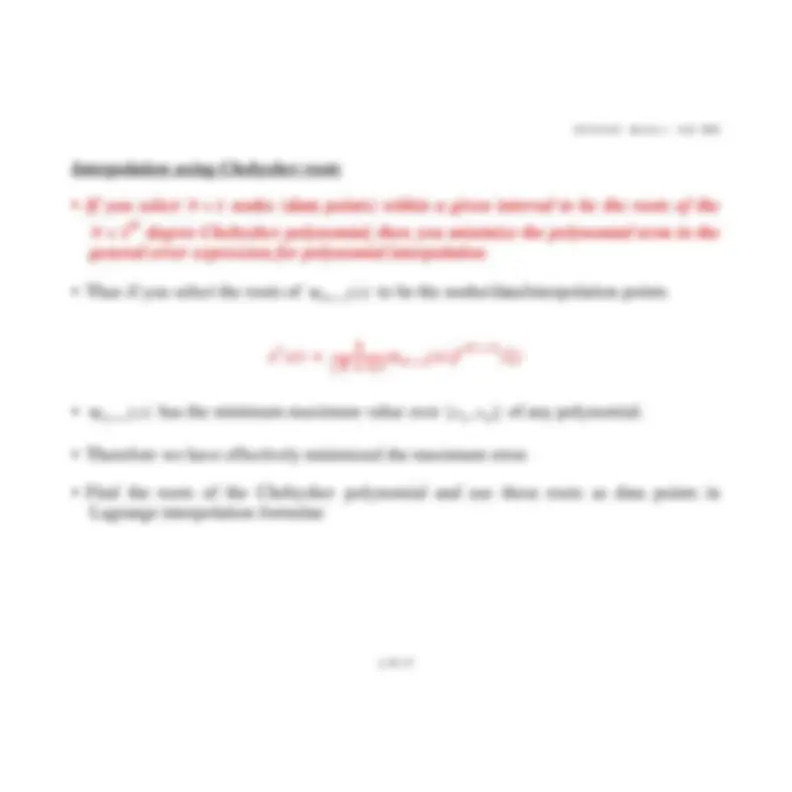



Study with the several resources on Docsity

Earn points by helping other students or get them with a premium plan


Prepare for your exams
Study with the several resources on Docsity

Earn points to download
Earn points by helping other students or get them with a premium plan
Community
Ask the community for help and clear up your study doubts
Discover the best universities in your country according to Docsity users
Free resources
Download our free guides on studying techniques, anxiety management strategies, and thesis advice from Docsity tutors
Review of Numerical Methods, Taylor Series, System of Linear Equations, Numerical Solution, Direct Methods, Gauss Elimination, LU Decomposition, Cholesky, Decomposition, Factor Method, Matrix Conditioning, Matrix Storage, Iterative Methods, Interpolation, Lagrange Interpolation, Chebyshev Roots, Extrapolation, Hermite Interpolation, Root Finding Algorithm, Bisection Method, Newton Raphson Method
Typology: Study notes
1 / 18

This page cannot be seen from the preview
Don't miss anything!











CE 341/441 - Review 1 - Fall 2004
p. R1.
x ( )
x^
f^
a (
f^
x (
x^
f^
x (
f a (
x^
a
(^
df ) ----- dx
x^
a =
x^
a
(^
d - 2
f d x
2 --------
x^
a =
x^
a
(^
d - 3
f d x
3 --------
x^
a =
x^
a
(^
d - 4
f d x
4 --------
x^
a =
x^
a
(^
n ) n
d - n^
f d x
n ---------
x^
a =
n
x^
a
(^
n )
1 +^
d^ n^
1 + d x
n^
1 +
---------------
ξ
a^
ξ^
x
f^
a (
f^
x^
CE 341/441 - Review 1 - Fall 2004
p. R1.
O x
a
(^
n )
f^
x ( )
f^
a (
x^
a
(^
df ) ----- dx
x^
x^
a
(^
d - 2
f d x
x^
O x
a
(^
O x
a
(^
f^
x ( )
f^
a (
x^
a
(^
df -----) dx
x^
x^
a
(^
d 2 f d x
x^
x^
a
(^
d - 3
f d x
x^
O x
a
(^
x^
a
(^
d
3 f d x
x^
O x
a
(^
CE 341/441 - Review 1 - Fall 2004
p. R1.
f^
x ( )
f^
a (
x^
a
(^
df -----) dx
x^
x^
a
(^
d - 2 f d x
x^
x^
a
(^
d - 3
f d x
x^
a^
ξ^
x
x^
a
(^
d - 3 f d x
x^
ξ^
ξ^
x ( )
=
f^
x ( )
ξ
ξ
x^
CE 341/441 - Review 1 - Fall 2004
p. R1.
→
→
O n
O n
CE 341/441 - Review 1 - Fall 2004
p. R1.
⇒
O n
O n
CE 341/441 - Review 1 - Fall 2004
p. R1.
-^
-^
-^
- Stability of iterative methods is only guaranteed if the matrix is diagonally dominant.
CE 341/441 - Review 1 - Fall 2004
p. R1.
th^
-^
g x
a^ o^
a^1
x
a
x 2 2
a^ N^
x^ N
g x
i (^
f^ i =
i^
a^ i^
i^
g x
)^ g x
f^ i
i^
x (
i^
0
i^
x (
x^
x^ o
(^
x^
x^1
(^
x^
x^2
(^
x
x^ i
1
(^
x^
x^ i
1 +
(^
x
x^ N
(^
x^ i
x^ o
(^
x^ i
x 1
(^
x^ i
x 2
(^
x
i^
x^ i^
1
(^
x^ i
x^ i^
1 +
(^
x^ i
x^ N
(^
i^
x^ j (^
i^
0
i^
j ≠
CE 341/441 - Review 1 - Fall 2004
p. R1.
g x
f^ o
o^
x ( )
f^^1
^1
x (
f^^2
^2
x ( )
0 (x)
x
(x) 2
x^1
= 4
x^0
= 3
x^2
= 5
x^1
= 4
x^0
= 3
x^2
= 5
x^1
= 4
x^0
= 3
x^2
= 5
x x
(x) 1
CE 341/441 - Review 1 - Fall 2004
p. R1.
g x
f^ o
x^
x^ o
(^
f o h ---------
x^
x^ o
(^
x^
x^1
(^
2
f^ o h
2 -----------
x
x^ o
(^
x^
x 1
(^
x^
x 2
(^
3 f^ o h 3 -----------
x^
x^ o
(^
x^
x 1
(^
x^
x 2
(^
x
x^ N
1
(^
N f o h
N -------------
i^
f^ i
f^
i^
2 f^ i
3 f^ i
4 f^ i
f^ o
f^
o^
f^^1
f^ o
2
f^ o
f^
1
f^
o
3 f^ o
2 f^^1
2 f^ o
4 f^ o
3 f^^1
3 f^ o
f^^1
f^
1
f^^2
f^^1
2
f^^1
f^
2
f^
1
3 f^^1
2 f^^2
2 f^^1
f^^2
f^
2
f^^3
f^^2
2
f^^2
f^
3
f^
2
f^^3
f^
3
f^^4
f^^3
f^^4
CE 341/441 - Review 1 - Fall 2004
p. R1.
th
e x (
f^
x (
g x
x^
x^ o
(^
x^
x^1
(^
x
x^ N
(^
f^
N^
1 + (^
)^
ξ(
x^ o
ξ^
x
e x (
x^
x^ o
(^
x^
x^1
(^
x
x^ N
(^
N
1 +^
f^ o
h
N
1 +
--------------------
CE 341/441 - Review 1 - Fall 2004
p. R1.
th^
f^0
,^ f
0 ,... ,
f^0
xN
x^0
x^1
x
(1)
(P) f^1
,^ f
1 ,... ,
f^1
(1)
(P)
fN
,^ f
N
,... ,
fN
(1)
(P)
p^
CE 341/441 - Review 1 - Fall 2004
p. R1.
⇒
f^
x (
f^
x ( )
f^
x^ ( o
f^
(^1) ( )
x
o (^
x^
x^ o
(^
f^
x^ ( r
f^
x^ ( o
f^
(^1) ( )
x
o (^
x^ r
x^ o
(^